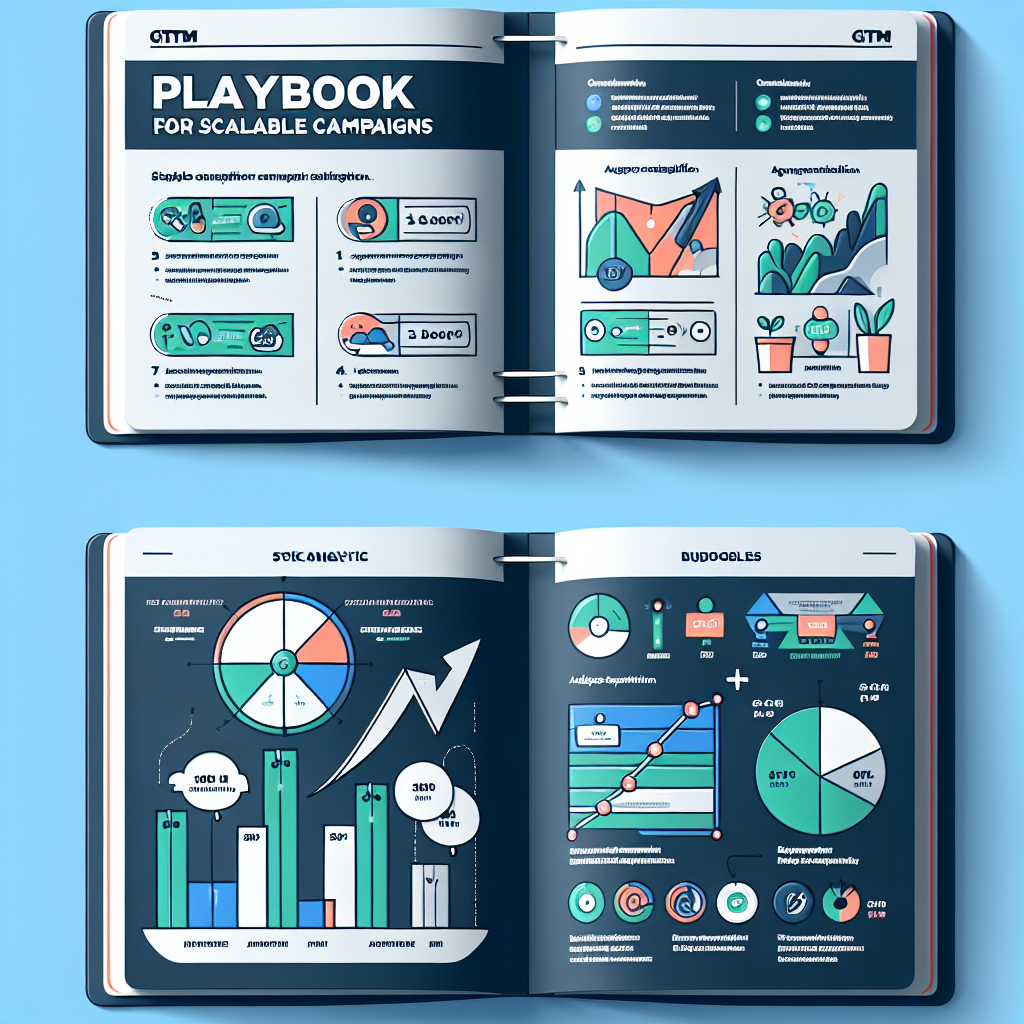-
Table of Contents
- The GTM Playbook for Scalable Campaigns
- Why Most GTM Campaigns Fail Before They Launch
- The Scalable GTM Framework: Strategy Before Splash
- 1. Define the Real ICP (Ideal Conversion Profile)
- 2. Nail the Narrative
- 3. Build the Campaign Backwards
- Case Study: How One SaaS Company 5x’d Pipeline in 90 Days
- Metrics That Actually Matter in Scalable GTM
- Here’s what to track:
- Truth Bomb
- Common GTM Myths That Need to Die
- The GTM Stack: Tools That Scale With You
The GTM Playbook for Scalable Campaigns

Forget the fluff. This is your no-BS GTM playbook for building scalable campaigns that don’t just launch—they dominate. If your go-to-market strategy still looks like a 2015 PowerPoint deck, it’s time for a hard reset. This article breaks down the frameworks, tactics, and mindset shifts needed to scale with precision, not just noise.
Why Most GTM Campaigns Fail Before They Launch
Let’s start with a truth bomb: most go-to-market campaigns are dead on arrival. Not because the product sucks. Not because the market isn’t ready. But because the strategy was built by a committee of people who think “alignment” is a strategy and “awareness” is a KPI.
Here’s what typically goes wrong:
- Marketing builds a campaign in a vacuum, then throws it over the fence to sales.
- Product launches without a clear narrative or differentiated positioning.
- Everyone’s chasing MQLs like it’s 2012.
- There’s no feedback loop between what’s working and what’s not.
Sound familiar? Good. That means you’re ready to do something about it.
The Scalable GTM Framework: Strategy Before Splash
Scalable campaigns don’t start with a launch date. They start with a strategy that’s brutally honest about your market, your product, and your team’s ability to execute. Here’s the framework we use at MarkCMO:
1. Define the Real ICP (Ideal Conversion Profile)
Forget the fluffy personas with names like “Marketing Mary.” You need to define your ICP based on conversion data, not creative writing. Ask:
- Who converts fastest?
- Who has the highest LTV?
- Who churns the least?
Then build your campaign around them—not around who you wish your customer was.
2. Nail the Narrative
If your messaging could be used by your competitors, it’s not positioning—it’s wallpaper. Your narrative should punch through the noise like a sledgehammer through drywall. Use this test:
- Can your sales team repeat it in one sentence?
- Does it make your competitors nervous?
- Would your customer repeat it to their boss?
Great GTM campaigns are built on a story that sells before the product does.
3. Build the Campaign Backwards
Start with the outcome. What do you want to happen? Then reverse-engineer every step to get there. This isn’t just funnel thinking—it’s funnel ownership.
- Start with the sales conversation.
- Then build the content that gets you there.
- Then build the ads that drive to the content.
Most teams do this in reverse. That’s why their campaigns look like a Frankenstein of disconnected assets.
Case Study: How One SaaS Company 5x’d Pipeline in 90 Days
Let’s talk about a real example. A mid-market SaaS company came to us with a “launch” plan that included a webinar, a blog post, and a press release. We threw it out.
Instead, we built a GTM campaign around a single insight: their buyers were terrified of vendor lock-in. So we created a campaign called “Break the Chains.”
- Landing page with a calculator showing cost of lock-in
- Customer stories of switching in under 30 days
- Sales enablement deck with competitive teardown
- LinkedIn ads targeting competitor’s customers
Result? 5x pipeline in 90 days. No fluff. Just strategy, story, and execution.
Metrics That Actually Matter in Scalable GTM
If you’re still reporting on impressions and clicks, I’ve got bad news: your CFO doesn’t care. Scalable campaigns are measured by business impact, not vanity metrics.
Here’s what to track:
- Pipeline velocity (not just volume)
- Sales cycle compression
- Win rate by campaign source
- Revenue per campaign dollar
And yes, you should be able to tie every campaign to revenue. If you can’t, it’s not a campaign—it’s a donation to the content gods.
Truth Bomb
If your GTM campaign can’t survive a CFO’s spreadsheet, it doesn’t deserve to survive the market.
Common GTM Myths That Need to Die
Let’s kill some sacred cows, shall we?
- “We need to be on every channel.” No, you need to be dominant on one.
- “We’ll figure out positioning after launch.” That’s like building a house and picking the foundation later.
- “Let’s A/B test everything.” If you don’t have a hypothesis, you’re not testing—you’re guessing.
Scalable campaigns are built on conviction, not consensus.
The GTM Stack: Tools That Scale With You
Tech won’t save a bad strategy, but the right stack can accelerate a good one. Here’s what we recommend:


Leave a Reply